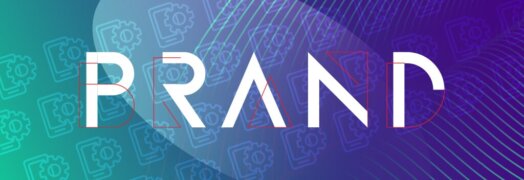Unless you are a seasoned marketing professional, all the terms people throw around when discussing branding can be confusing. We work on B2B branding projects everyday and understand how all the lingo can appear to mean various things to different people. To provide clarity, we’ve compiled a short list of key branding terms and their definitions. Knowing all the terms is especially important for a B2B or B2C firm who is thinking about a marketing overhaul, creating a new digital strategy, or considering a re-brand.
Ambassador – A brand ambassador is anyone who works for your company and interacts as a representative of the company. An ambassador can be a Sales Person, Executive, or even a Customer Service Representative.
Awareness – How many people are familiar with a company and its products or services. Awareness should be gauged on a scale of Poor to Great, which measures how well people know what products/services a company offers and what a company is all about.
Brand – The term originally referred to livestock owners who would mark their herd with a distinctive symbol for clear identification. The term now refers to how a target market distinguishes one company and it’s values from a similar company.
Branding – As a verb, it’s the process of discovering and communicating the overall image of your firm. As a noun, it’s the image you project in the market to your target audience.
Collateral – An all-encompassing term referring to any and all marketing materials used for a company. This includes brochures, presentation templates, email signatures, email templates, business cards, data sheets, case studies, etc.
Culture – Every B2B firm and B2C company has a unique set of beliefs, customs, way of thinking, and standards of behavior/work. For many companies, having a clear understanding of the culture is essential to communicating the brand.
Customer Service – Every member of your organization is responsible for an excellent experience for clients. It can make or break your firm’s brand.
Guidelines – Refers to a short list of rules and requirements for representing the company visually, in text, and in person. The more specific the overall rules, the more cohesive an organization will appear to potential and existing customers.
Identity – All of the unique attributes that define your company are considered the Brand Identity. Business Name, Logo, Tagline, business card, products and services, dress code, etc, are all things that combine to create the identity of a brand.
Image – How a brand is perceived by its target audience. The way a brand appears to potential customers or clients is essential to the success of a company.
Intangible – Brand assets incapable of being touched. These all work together to create the essence of the brand. Intangibles include trademarks, expertise, designs, etc.
Logo – A unique design or custom symbol that acts as the identifier of a brand. It is a visual representation of a firm’s brand.
Marketing – Marketing covers all the activities related to creating awareness, interest, and leads in a company’s products or services. Typically, Marketing acts at the brand police for an organization.
Message/Messaging – Often referred to as “Brand Message” or “Brand Messaging,” it is the main value proposition of a company’s services or products. The brand message communicates what the brand is and what separates it from competitors.
Mission Statement – An explanation of the overall goal and major values of a company. This statement often guides the B2B branding process.
Personality – Any identifying factors about a company specifically related to how it interacts with public. Many B2B firms create a “brand personality” to define the attitude of the brand, how it portrays the company, and relevant beliefs.
Re-brand – A process of taking a look at the overall identity of a company and making changes or revisions to the identity. Often an intensive procedure that includes input from major stakeholders and impacts all levels of an organization.
Recognition – The level to which your target audience can identify your B2C or B2B brand and services or products based on your name or logo. Best Buy, Target, Apple, Google, and Microsoft are all examples of companies with strong brand recognition.
Tagline – The condensed slogan that typically accompanies the company logo and captures the essence of the brand.
Tangible – Assets that can touched or felt, like buildings, property, products, and packaging.
Target Market – The desired potential customer audience. The best way to determine who is in your target market involves creating a “customer profile” of a fake person who represents your ideal client.
Value Proposition – What your client gets when they pay for your product or service. It usually includes the major advantage of choosing you over a competitor.
Vision – The future of how your company will look and operate. Vision dictates the goal setting and B2B branding efforts of your marketing and sales strategy.
Going through the B2B branding or rebranding process is an exciting time for a company. Don’t get overwhelmed by the process or all the terminology involved.



